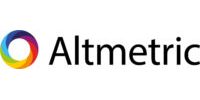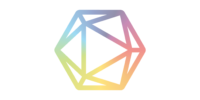Subscribe to our newsletter
Is research reaching the reader?
Why truly listening is so important for scholarly communications to succeed
How research is communicated is central to the function of a healthy research community and, as such, is close to our hearts at Digital Science. The Researcher to Reader (R2R) Conference is known to share that love and so it was great to see the return of the in-person gathering last month. It was an event where interested parties could engage with each other and partake in discussions on how research communication has changed through the pandemic and how it continues to change into the future.
A key challenge highlighted at R2R and which we are very familiar with at Digital Science was: Do we know how research is reaching the reader? Are we ensuring research is the single most powerful transformational force for the long-term improvement of society?
Researchers have an increasingly large number of ways to consume research results, ranging from the traditional article and raw research data to video abstracts, lay summaries and even tweets. In the last few years, consumption of open research data has developed significantly – this is certainly due to open data mandates and technologies that allow for the visualisation of data in online previews (see for example, Figshare). This dizzying range of formats and venues poses new challenges for researchers – where should they look to find new research? What can they trust?
To address these challenges, it is important to listen and act on the needs of readers. However, what feedback loops are acceptable in the context of research? Fundamentally, those of us in the scholarly communications space need to understand the challenges of living in a world where surveillance capitalism is recognised as more than an invasion of privacy, but also as a threat to building trust in an increasingly online world. But, we should also try to build the best experience for users in the research ecosystem so that they can form trusted, collaborative and effective relationships online. This is not a transactional process, but a collaborative one.
Talks and debates at this year’s R2R were full of such collaborations, centred around reader access, open science and research data discoverability. Workshops saw deep dives into challenges such as early career researcher insights and creating a disability toolkit for scholarly publishing, the latter facilitated by Digital Science’s own Katy Alexander, Global Director Marketing Operations & Analytics.
Digital Science’s goal is to try to change the scientific ecosystem by challenging the way things are done and act on the needs of its users and customers. This is happening across its portfolio across all stages of the research lifecycle – from Altmetric tracking the most influential 100 articles to Dimensions classifying research grants by Sustainable Development Goals; from Figshare’s annual State of Open Data report to new solution Ripeta’s reproducibility checks.
So, Digital Science is here to listen, to collaborate and to contribute. In 2022, the world sees continuing disruption to our way of life in the shape of the long-term impacts of the Covid-19 pandemic on our health and on our society as well as more immediately visceral issues such as conflict in Eastern Europe. We continue to believe that research is key to issues like these and that the global research community needs to be supported with the right infrastructure to make a difference. By listening to the community and working with them to maximise research outcomes, we hope to make our contribution to a better future.

About the Author
Simon Linacre, Head of Content, Brand & Press | Digital Science
Simon has worked in scholarly publishing for almost 20 years. His background is in journalism, and he has been published in academic journals on the topics of bibliometrics, publication ethics and research impact.


